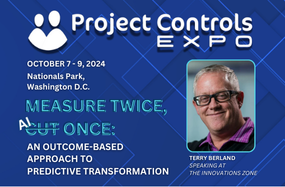
What are S-Curves in Projects & How to Automate Them to Save Time and Money?

This article will define S-curves, explaining how automating them can save you time and money. We examine the connection between S-curves, project controls, and project management: exploring how to decide which questions to ask; factors that determine measurable metrics; and the advantage of S-curve automation.
What Are S-Curves?
An S-curve in project management is a mathematical graph representing all project data over time. It usually resembles an “S” because:
- Early in the project, during planning, progress is slow and steady.
- In the middle, an inflection point is reached with accelerated activity.
- Toward project closeout, progress slows again as final tasks are completed.
This curve provides a clear visualization of project progress, cost performance, and schedule adherence — making it one of the most important tools in project controls.
The Cost of Manual S-Curves
If your company is still creating S-curves manually, you’re spending hours (and dollars) compiling data. S-curves are central to tracking KPIs like budget variance and schedule performance, yet many teams get frustrated when cost or schedule overruns aren’t visible until it’s too late.
Instead of diverting time from analysts or IT staff, many organizations are now shifting toward automated, cloud-based S-curves that provide near real-time insights and reduce human error.
Why Should You Use S-Curves?
In simple terms, an S-curve is a logistical curve or mathematical model describing one variable’s growth in relation to another variable over time: such as budget variance—comparing projected costs with actual costs and the difference between the two—as well as how that budget variance changes, over time.
Or, as McKinsey & Company puts it, the S-curve framework is “used in various disciplines to represent the beginning, rapid growth, and maturity of something via an S-shaped curve.” In project management, that means you can:
• Compare planned vs. actual performance
• Spot early warning signs of overruns
• Align resources and forecasts with reality
And in 2025, these insights matter more than ever — 37% of projects fail due to unclear objectives or milestones, according to The Business Dive.
Why Are S-Curves Critical for Growth?
Because they allow you to visualize how your company is performing regarding chosen KPIs, you can understand which KPIs may be slowing you down or need adjusting, depending on the resources allocated to a particular project. S-curves can also shed light on the relative level of maturity that a particular metric has achieved, allowing you to adjust measurement factors depending on the project’s needs as it progresses.
Harvard Business Review’s Graham Kenny claims that project KPIs should be based on the priorities of strategic stakeholders and that traditional KPIs fail to show concern for all interested parties. However, projects stand a much greater chance of succeeding if all stakeholders’ needs and goals are addressed and if all involved parties trust its objectives in the first place.
Data Distrust & Delayed Analytics
Here are the top three reasons why 77% of leaders don’t trust data:
- Data quality & formatting
- Siloed data sources
- Delayed analytics
S-curves often fall into the delayed analytics bucket of distrust because they are time-intensive to create regardless of the number of macros written and data team members involved. This is where automation comes into play as being helpful to achieving your S-curve goals.
The Bottom Line
In project management, timely insight is everything. Manual reporting slows down decisions and leaves teams reacting instead of leading. Automating your analytics — including S-curves — lets you monitor project performance continuously, without the bottlenecks of manual data prep.
That’s where LoadSpring INSIGHTS comes in. It automates the process of collecting, transforming, and visualizing project data from multiple systems, so your reports and dashboards update on schedule — no waiting, no rework. INSIGHTS gives your teams real-time visibility into the metrics that matter most, all within LoadSpring’s secure Unified Project Platform.
Learn more about automated reporting and scheduled analytics at LoadSpring INSIGHTS.
Related Questions
What are S-curves used for in project management?
S-curves are used to track a project’s progress over time. They visualize how actual performance compares to planned progress, making it easier to spot schedule delays, cost overruns, or productivity trends before they affect project outcomes.
Why should project teams automate S-curves?
Automating S-curves saves time, reduces errors, and ensures data accuracy. Instead of manually pulling reports from multiple systems, automation delivers up-to-date S-curves that reflect real-time performance — helping teams make faster, data-driven decisions.
How can LoadSpring INSIGHTS improve project reporting?
LoadSpring INSIGHTS automates the process of gathering and updating project data from multiple sources. It keeps dashboards and reports current on a schedule, giving stakeholders a reliable view of key metrics — without the manual effort of traditional reporting.








